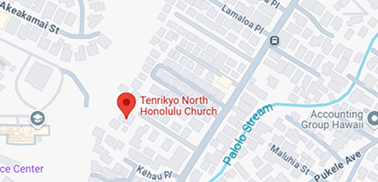Why Do We Feel Alone in Crowds?
Even though my life is full of people—family who love me, cherished dogs, friends, and colleagues—I’ve come to realize how essential meaningful connection really is. Not just being around others, actually feeling that you are seen, supported, and whole. I notice this most when I travel—for work, church, or other projects—because that’s often when the absence of connection can at times feel like a sudden, blaring silence—impossible to ignore.
With a full life and loving relationships, I still feel an unavoidable kind of loneliness when I travel. Despite being, literally, surrounded by crowds—people rushing through airports, gathering at conferences, packed into transit—I often feel strangely disconnected. There’s something about being away from the familiar that makes the presence of strangers feel even more distant. I can be shoulder to shoulder with others and still feel completely alone, as if I’m drifting through these busy spaces without truly being seen.
This disconnect often happens because we’ve unconsciously accepted social norms that keep us isolated even in crowded spaces. We’ve learned to look at our phones instead of making eye contact, to keep conversations surface-level, and to treat social interaction as something we squeeze in after everything else is done. But what if we challenged these invisible barriers that prevent us from connecting with the people right in front of us?
What Happens When Connection Feels Just Out of Reach?
It’s not the dramatic kind of loneliness you might expect. During the day, I will see people I “know,” attend meetings, share coffee and conversation, and enjoy the company. In those moments, I genuinely feel okay—sometimes great. But when the day winds down and I return to my room, a sense of isolation can return. The space feels too quiet. I find myself turning on the television just for noise. The city outside the window feels far away. And despite all the people in my life, I still feel alone in that moment.
What I’ve discovered is that we often underestimate the power of simple, authentic interactions. Research shows that even brief, genuine exchanges with strangers can significantly improve our mood and sense of connection. The key isn’t the length of the interaction—it’s the authenticity. When we show up as our real selves, even in small moments, we create opportunities for meaningful connection that can transform an entire day.
Why Does Travel Make Loneliness Feel So Intense?
I’ve realized it’s not just about lacking connection—it’s more about being removed from it. When we travel, even temporarily, we’re pulled out of an environment where our support system is easily within reach. You might not consciously recognize it, but just the fact of their presence is support in itself. So, any disconnection, even if only for a few nights, can weigh heavily.
This is where proximity plays a crucial role in building connections. The people who are geographically nearest to us often become dearest to us, not because of some mysterious chemistry, but because repeated exposure creates familiarity, comfort, and trust. When we’re traveling, we lose this proximity advantage, which is why maintaining connections becomes more intentional work.
How Do We Build Communities That Actually Connect?
That’s why I believe so strongly in building an intentional community—for everyone. Whether you’re traveling, in a life transition, or just looking to build or rebuild your support system. If you don’t feel like talking, simply being there—sharing the same space, hearing or seeing other people who are also there to connect—can be enough. This can happen virtually—scrolling through our feeds, participating in forums or discussions, or interacting with familiar ‘faces’ online—any of this can feel like a connection meaningful enough to stave off feeling alone It’s a very different experience from being surrounded by people who are just trying to get to their destination or get through their day.
Building these intentional connections requires us to recognize that social connection isn’t a luxury—it’s a necessity for our wellbeing, just as important as sleep, exercise, and good nutrition. When we prioritize connection with the same intentionality we bring to other health practices, we create a foundation that supports us whether we’re at home or thousands of miles away.
Sometimes the barrier to deeper connection is our own reluctance to be vulnerable. We expect shallow interactions to be more comfortable, but often find that when we share something real about ourselves—even something small—both people leave feeling more energized and connected. The courage to be authentic, even in brief encounters, can transform routine exchanges into moments of genuine human connection.
At Tenrikyo North Honolulu Church, we want to make a “space” for those kinds of connections. Not just for extroverts or locals, but for anyone feeling a little out of place—whether it is temporary or ongoing. Remember that it may only take reaching out, sharing or observing to feel human again. And just your presence—no matter how quiet—is a contribution.
We believe in creating environments where connection can happen naturally and authentically. This means fostering spaces where people feel safe to be themselves, where conversations can move beyond the surface, and where your presence—whether active or quiet—adds to the collective sense of belonging. Because sometimes, the most powerful connections happen not through grand gestures, but through the simple act of showing up and being genuinely present with others who are doing the same.
What Small Steps Can Transform How We Connect?
Creating meaningful connections doesn’t require dramatic changes to your life. Here are some simple practices that can help bridge the gap between isolation and authentic community:
- Be genuinely present in everyday interactions. The next time someone asks “How are you?”, consider taking the question seriously. Share something real about your current state, and listen carefully when you ask the same in return.
- Show up consistently in the same spaces. Whether it’s a coffee shop, gym, or virtual community, repeated presence creates the foundation for familiarity and eventual connection.
- Challenge your assumptions about others. Most people are more open to connection than we expect. That brief conversation you’re hesitant to start might be exactly what both of you need.
- Practice active presence. Put away distractions, make eye contact, and give people the gift of your full attention, even in brief encounters.
Remember: every interaction is an opportunity to choose connection over isolation, authenticity over performance, and presence over distraction.



